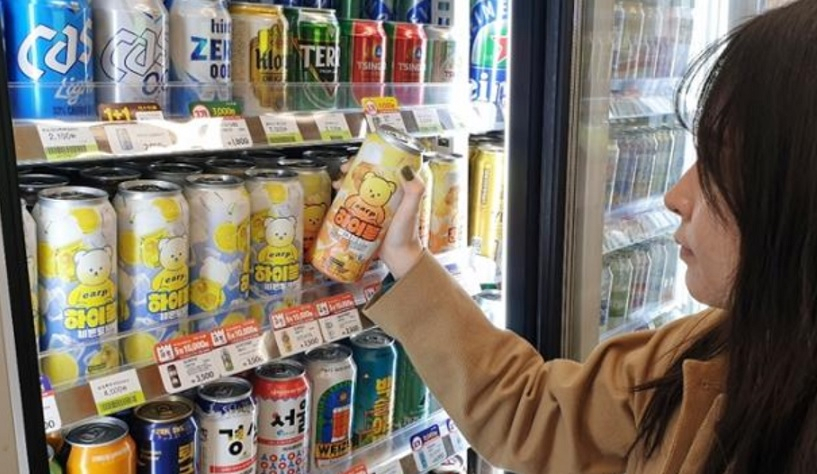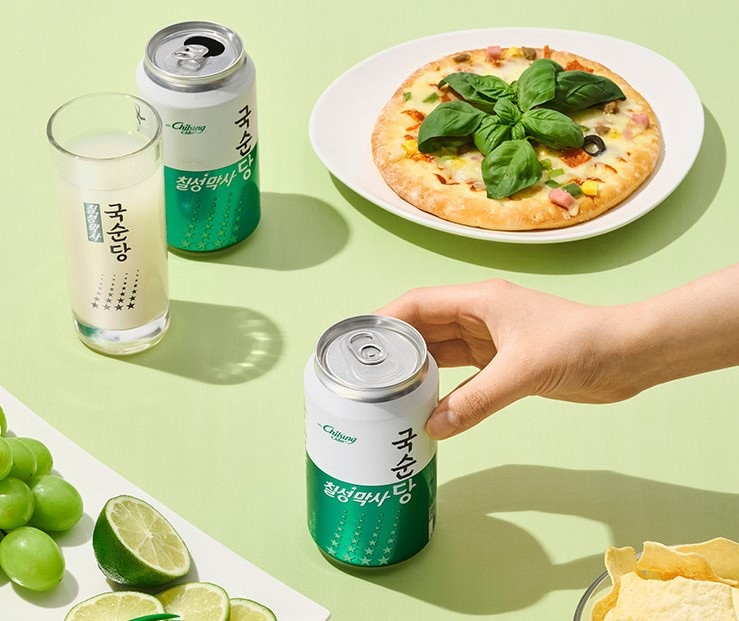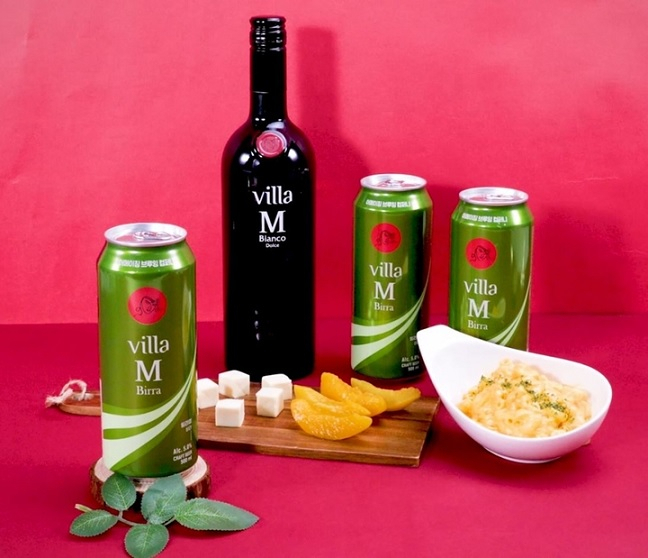 |
A woman holds a canned highball launched by CU in November last year. (BGF Retail) |
A Starbucks at the foot of Bukhansan National Park in Seoul serves fruit-flavored icy blended drinks in whiskey glasses, combining lemonade, Earl Grey tea and non-alcoholic cognac syrup. The whiskey-inspired mocktails are offered only at the Bukhansan location.
A 26-year-old graduate student surnamed Hong was among the guests enjoying the mocktails against the backdrop of panoramic mountain views.
Hong, introducing herself as a fan of highballs made with whiskey and soda, commented, “This feels like enjoying a low-alcohol cocktail.”
 |
An alcohol-free blended beverage made with lemonade, Earl Grey tea and non-alcoholic cognac syrup is offered exclusively at Starbucks' Bukhansan branch. (Choi Jae-hee / The Korea Herald) |
Koreans, traditionally, like to mix up ingredients -- whether it be in their food or drinks. But when it comes to alcohol, typical mixed drinks have in the past stayed mostly confined to either soju and beer or whiskey and beer.
Younger generations, however, are into discovering and creating more diverse mixed drinks, including coffee cocktails.
At cafe Grony in Hapjeong-dong, Seoul, one can taste coffee-based cocktails like the espresso martini. Another cafe in Yongsan, Shannon Seoul, is famous for its Irish coffee, a classic European coffee drink made by adding whiskey to coffee and topping it with whipped cream.
At convenience stores, arguably one of the trendsetters in the local food scene, canned highballs are gaining traction among customers.
At GS25, sales of highball drinks between January to March surged by 201 percent from the same period last year, company officials said.
CU convenience stores, run by BGF Retail, reported a 64.9 percent rise in sales of highball products last month from November when the company first launched its ready-made highballs, with 78.3 percent of the buyers in their 20s and 30s.
Some beverage companies have come up with new liquor products blended with soft drinks.
Late last year, Lotte Chilsung Beverage, the beverage unit of South Korean conglomerate Lotte Group, launched “makgeolli cider,” or “maksa” for short, a blend of Korean rice wine and a lemon-lime-flavored soft drink in collaboration with traditional Korean liquor company Kooksoondang Brewery.
 |
An image of makgeolli cider launched by Lotte Chilsung Beverage in collaboration with traditional Korean liquor company Kooksoondang Brewery (Lotte Chilsung Beverage) |
 |
Villa M Birra, a canned beer blended with sweet white wine, was launched by local beer company Amazing Brewing Co. in January. (Amazing Brewing Co.) |
The diversifying mixology trends have one common outcome -- an uptick in whiskey sales.
The volume of imported whiskey came to 8,443 metric tons in the January-March period, up 78.2 percent from a year earlier, according to data from the Korea Customs Service. It marked the highest first-quarter tally since 2000 when data tracking began. It is also the largest quarterly figure after 8,625 tons posted three months earlier.
In particular, mid-to-low market whiskey brands are gaining traction among young Koreans who are inclined to mix them with soda water and other drinks, according to industry sources.
Love to mix
“It is not a brand-new trend,” says Lee Eun-hee, a professor of consumer studies at Inha University. “Koreans have always been fond of mixing drinks as seen with the long popularity of ‘poktanju.’”
Poktanju, which directly translates into "bomb drink" in Korean, is a mixture of a shot of a strong liquor -- typically soju or whiskey -- and Korean beer.
It is believed that poktanju was introduced into Korean society in the early 1980s by the military. The concoction gained popularity rapidly and soon made its way into various social settings, including office parties and gatherings, Lee explained.
In the past, when drinking heavily together was considered the quickest way to cement a work relationship, the main goal of drinking strong "bomb" shots was to get drunk, Lee continued.
“Now, Koreans focus more on the quality and taste of what they drink, which led to a new variety of mixed drinks, in part reviving (something similar to) the old poktanju culture as something hip and trendy.”
The booze scene change, from binge drinking to a sipping culture, has also attributed to the rise of new mixology trends, young drinkers said.
“Beverages that contain no- or low- alcohol are popular among those who like drinking alone at home,” said Lee Seung-min, a 31-year-old office worker in Seoul.
Lee said even during work dinner and drinks parties, known as "hoesik," many now opt for highballs, instead of poktanju.






![[Today’s K-pop] Blackpink’s Jennie, Lisa invited to Coachella as solo acts](http://res.heraldm.com/phpwas/restmb_idxmake.php?idx=644&simg=/content/image/2024/11/21/20241121050099_0.jpg)
